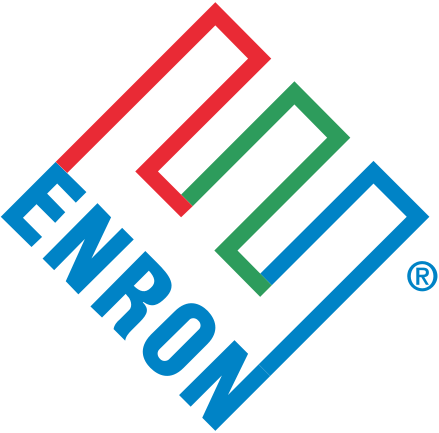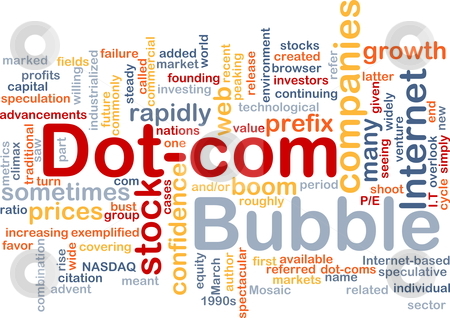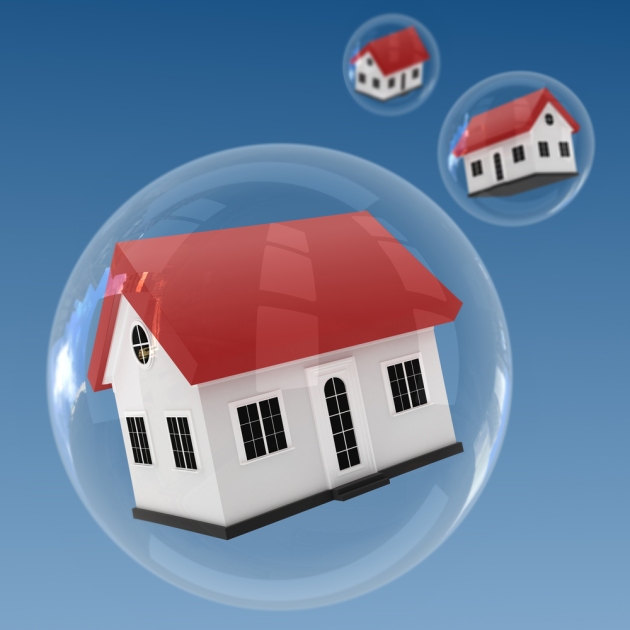by Julian Vasquez Heilig | Cloaking Inequity Blog - Endeavoring to reform Reformers' reforms since 2012 | http://bit.ly/10gGj7V

May 9, 2013 :: At the recent AERA [American Educational Research Association] conference in San Francisco, I was having a conversation with a local San Franciscan. He we mentioning that he was disappointed that he had not been able to take financial advantage of the last two “bubbles.” He was asking aloud what other thought was going to be the next “bubble.”
I volunteered education.
Generation X stories from the past two bubbles:
Enron. When I first moved to Houston I had two friends that worked for Enron. Moving from Michigan, I had never heard of Enron but was quite surprised by their buzz in Texas when I arrived. Ken Lay was the talk of the town, they were building a new gleaming building in downtown Houston, and the Astros baseball stadium bore their name. I asked my friends what it was exactly that Enron did to make money, they explained it to me, and I went away wondering how they made money doing what they described. They weren’t.
Dot Com. When finishing college in the mid-1990s, I had numerous friends who left for the Bay Area to start and work for .coms. We know of course those that emerged from the carnage such as Yahoo. But several friends who sought out .com fortunes lost everything before they could “go public.
”
Housing Bust. More recently, I had friends who bought homes in Southern California that could be graciously called fixer-uppers for hundreds and hundreds of thousands of dollars hoping to flip them to the next person with only modest improvements. When the market went belly-up, so did their liquidity and finances.
Wall Street and Tejano Music. Let’s be honest with ourselves. First, Wall Street were the culprits in all of the above bubbles. Additionally, Wall Street has a bubble every few months. Bobby Pullido, a Tejano singer, once told me that he thought “Wall Street is a Pyramid scheme” while we argued politics and economics late into the night. I am prone to do this, it is hereditary I think.
With each bubble, the public’s gut feeling was that it was probably a bubble despite their “irrational exuberance,” and they just wanted to get out before it burst so that they wouldn’t be holding the bag when the music stopped.
Wikipedia describes an economic bubble as a:
… Speculative bubble, a market bubble, a price bubble, a financial bubble, a speculative mania or a balloon… is “trade in high volumes at prices that are considerably at variance with intrinsic values.” It could also be described as a trade in products or assets with inflated values.
While many explanations have been suggested, it has been recently shown that bubbles appear even without uncertainty, speculation, or bounded rationality. It has also been suggested that bubbles might ultimately be caused by processes of price coordination or emerging social norms.
Is education ripe to be the next American bubble(s)? The last census found that United States spent $1,093,000,000,000 on all levels of education. However, many have been arguing that education is a “monopoly.” You see education has been considered primarily a public good, and so has been mostly provisioned by the public. The Census shows that of total K-12 spending of $661 billion, private K-12 accounts for 8% of total spending ($50 billion). In higher education, the US spent $442 billion, of that 37% of total spending is private ($161 billion).
So after all that economist speak… The question I am left with today is will the rush to spend billions on a variety of inefficacious reforms without potentially receiving future returns and the public be left holding the bag? Of course an entire book can be written about an impending or perhaps already expanding bubbles in education, however, this a blog post so I will consider a few potential education bubbles in the time it will take to drink your coffee.
Online Learning
One of my favorite blog posts of all time on MOOC and online education is Larry Cuban’s post MOOCs and Hype Again. (I had the pleasure of meeting Larry Cuban’s for the first time at AERA San Francisco). He stated:
I have a confession to make. I dropped out of a Massive Open Online Course (MOOC) on Artificial Intelligence at Stanford university in the Fall of 2011. There were over 160,000 other students in the class from all over the world. I listened to the two professors on my laptop give mini-lectures, watched fast hands scrawl quickly and cleverly over whiteboards to graphically display the concepts they were teaching. I found the information fascinating. I took a few quizzes. Then I fell behind and realized that I couldn’t keep up, given the other things I was doing so I dropped out. End of story about my first encounter with a MOOC. Turns out, however, that about 138,000 others dropped out also since only 14 percent completed the course and received a certificate.
MOOCs have soared in popularity as the “disruptive innovation” that will revolutionize higher education. Called the “Most Important Educational Technology in 200 Years” by the head of a new consortium of Harvard and MIT offering MOOCs, forecasts of fundamental changes in higher education are as common as iPads in a Starbucks. Stanford University President John Hennessey says “there’s a tsunami coming.”
MIT’s first course had a similar completion rate. See the infographic below:

Larry Cuban called MOOCs in the midst of a hype cycle. He states that MOOCs are at the very beginning of the Hype Cycle. Essentially, once the various realities of online courses hit the public, they might not seems as sexy as what they already have and the bubble will burst. Thats not to say that places like the University of Phoenix don’t have an important role as a producer of online MBAs etc.
In a recent meeting with a Vice President of Finance at a private university, we discussed the economics of online courses. Private universities are enamored with online delivery because it dramatically reduces cost relative to revenue— regardless of completion.
Then there is this on online colleges: NY Times: Online Colleges Are a Sham
How about K-12? NEPC weighed in:
Over just the past decade, online learning at the K-12 level has grown from a novelty to a movement. Often using the authority and mechanism of state charters, and in league with home schoolers and other allies, private companies and some state entities are now providing full-time online schooling to a rapidly increasing number of students in the U.S. Yet little or no research is available on the outcomes of such full-time virtual schooling. The rapid growth of virtual schooling raises several immediate, critical questions for legislators regarding matters such as cost, funding, and quality.
Does the online education bubble burst when the realities of online education surface for the public?
Common Core Standards
At AERA, over lunch Christopher Miracle from the California Schools Boards Association related that the Common Core standards will cost $3 billion over the next two years in California. The May estimates of the current California surplus were $5 million— for the entire budget. Rupert Murdoch signs up for $13,000,000 on the table for test development. But that is just the beginning, Gotham Schools relayed that Rupert Murdoch stated:
We see a $500 billion sector in the U.S. alone that is waiting desperately to be transformed by big breakthroughs that extend the reach of great teaching.
Regardless of whether you think Common Core is the next best thing after sliced bread, or not…
Does the Common Core bubble burst when the realities of the expense of Common Core surfaces for the public?
Choice
Charters, Vouchers, etc. Impossible to do justice to the big eyeballs that neoliberals and proponents of choice have in mind for reducing share of public education $ in the US. To examine the efficacy of choice, go to the search box on the left hand column of this page and Cloaking Inequity for these terms: Chile and Vouchers, Charters and CREDO, Neoliberals.
Does the choice bubble burst when the intentions of neoliberals and the reality of charters/vouchers limited impact on achievement surfaces for the public?
Side note: Have you noticed that Dr. Patrick Wolf, a lone wolf who consistently distributes research that says vouchers have small, but limited effects on achievement is the holder of the “21st Century Chair in School Choice” at the U of Arkansas. So what would happened if he released papers with models showing that school choice was inefficacious? Would they make him the holder of the “21st Century Chair in Non-School Choice”? The irony. I doubt either will happen.
Wyclef John:
Singin’ dollar dollar bill ya’ll (dollar, dollar bill ya’ll)
Singin’ dollar dollar bill ya’ll (dollar, dollar bill ya’ll)
Author:Julian Vasquez Heilig
Julian Vasquez Heilig is currently an Associate Professor of Educational Policy and Planning and African and African Diaspora Studies (by courtesy) at the University of Texas at Austin.
smf: LAUSD is heavily invested in all of this dubious speculation …but if we have a a bubble of our own it would be the A-G Graduation Requirement.. Should LAUSD actually see A-G through – with a “C” grade required to pass a class and all A-G classes passed to receive a diploma - LAUSD’s graduation rate – which has been slowly and incrementally improving – will tumble catastrophically and the bubble will burst.





No comments:
Post a Comment